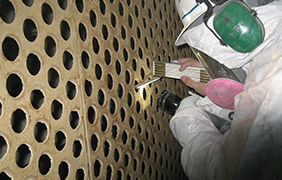Anaerobic digestion is a series of biological processes that happen in a sealed container with the absence of oxygen. Due to this absence, microorganisms are able to breakdown biodegradable material and produce two end products. One product is biogas, which can be used to generate electricity and heat or can be used for renewable natural gas. The other product is digested solids which can then be composted, used for livestock bedding, or applied to cropland and used for fertilizer.
The Process
There are four stages of anaerobic digestion
- Hydrolysis
- Acidogenesis
- Acetogenesis
- Methanogenesis
The digestion process starts with a chemical reaction called hydrolysis, which breaks the bonds of the input materials. This allows insoluble organic polymers to be broken down and large polymers to be converted into simple monomers. Then during a biological reaction called acidogenesis, those simple monomers are then converted into volatile fatty acids. Next, another biological reaction called acetogenesis occurs where the volatile fatty acids are then converted into acetic acid, carbon dioxide, and hydrogen. Finally, in methanogenesis, the acetates are converted into methane and carbon dioxides, and the hydrogen molecules are consumed. This process will typically result in the captured biogas being transported via pipe to a gas use device or to a gas treatment system.


